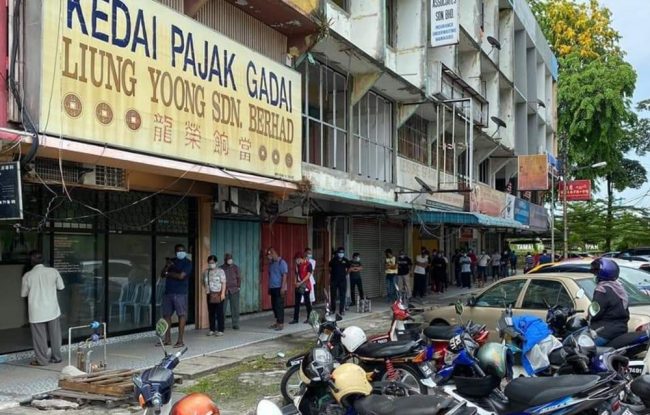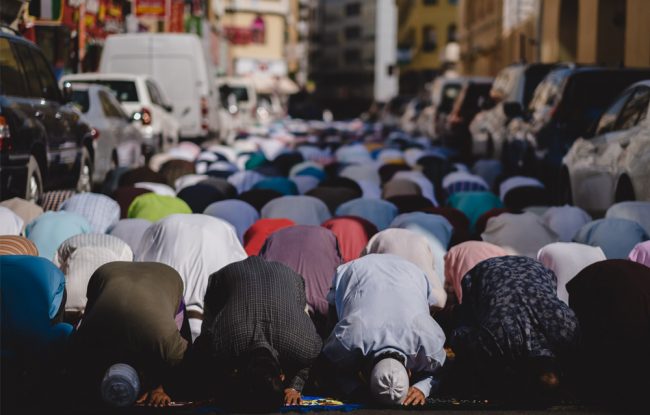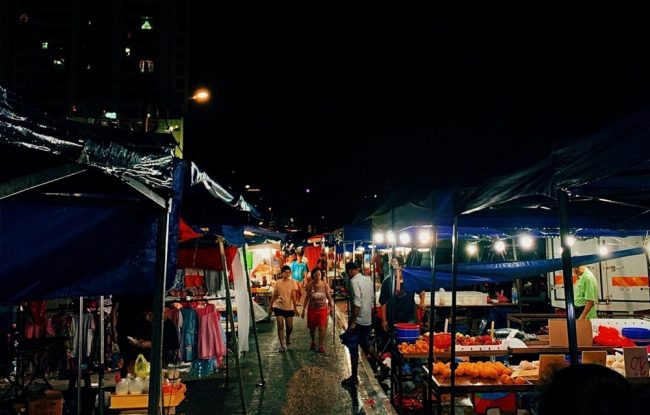Travelling has become the touchstone of modern middle-class aspirations. It is present everywhere: on social media feeds with enticing photographs and films that speak about escapism of the local mundane and into uncharted adventures. To travel is be enlightened and to broaden one’s perspectives through invaluable experiences. While swimming in this euphoric ocean, we often overlook the consequences of travelling, and whatever we choose to label ourselves as when we travel when we visit a land foreign from ours – we’re tourists. And as tourists, we engage with a state-constructed economic project that has both material and abstract consequences.Tourism can transform a nation or localities’ economy. In 2017, tourism contributed RM73.3bil to Malaysia, making the industry the country’s third-largest economic contributor. And in an economy where the locals’ highest concern is economic security and cost of living – a reliance on foreigners to generate national income can be a promising policy. This tourism tax introduced last year is a realisation of that, with the Ministry of Tourism estimating an annual revenue of RM210 million. Apart from enriching both the local and national economy, it also provides its citizens with a source of pride. The investment in local landmarks, museums, entertainment, food, and culture can boost one’s sense of identity, history and belonging and become a social currency that can be presented to external parties.
We see this in the promotion of often mundane local landmarks such as lighthouses, alleyways, and homes that to “outside eyes”, holds little significance beyond superficial cultural appreciation and an Instagram photo. But embellish it with historical context, then it suddenly becomes a source of lore and pride. Suddenly, it means something. Sometimes, sites of tourism are artificially manufactured; a contemporary landmark to draw in visitors. We see this materialise in theme parks or the countless shopping malls that mushroom throughout the Klang Valley – monuments that hold limited social benefits to locals but provides tourists with a site of entertainment or leisure. Tourism then, beyond pride, offers little for the local landscape that it is built on. This brings me to reflect on my recent observation in Venice, Italy.
In the middle of the high street Rio Terà Lista di Spagna, there was graffiti, spray-painted in blood-red: TURIST FUCK OFF! in a haphazard and angry scrawl. The canvas it was spray-painted on was an ancient landmark undergoing restoration. Incidentally, passing tourists, to whom the message was directed – saw the public declaration, simply laughed and either took a photo or dismissed it entirely. This spectacle encapsulates in entirety the relationship and response foreign tourists have towards the locals. Tourism reaps undeniable economic benefits, but what it also imposes is a terraforming effect onto the locality. For this terraforming to occur, there must exist two factors: 1) an economy driven by tourist needs and expectations, and 2) material and symbolic icons.
Tourism-driven Economy
Tourism terraforming has consequences for the local cultural and economic landscape. Take an observation in Venice again, for example. Behind its muted stone walls and spaces are hotels, apartments, trinket stores and restaurants aimed at tourists. Rarely does one find business institutions serving the needs of locals. We see this happening as well in Bukit Bintang, Kuala Lumpur: where luxury brands in high-end malls, the Middle- Eastern-inspired Arab Street and clubs and bars are intended to draw in tourists, expatriates and affording locals. This terraforming involves importing elements that are foreign into the locality, i.e. clubs and bars, which before tourism intervention, would have been cordoned or rejected themselves by the locals.
One would imagine that clubbing, bars and alcohol, decades ago – did not occupy much space in cities and were limited to specific enclaves. But the influx of Western tourists, with demand for entertainment and cultural comforts so used to in their own countries, forced local states to establish and reproduce these “foreign culture” institutions. One, to accommodate tourist culture and their wants. Two, to find more ways to drive the economy by extracting profits from financially-abled tourists. What this does is also carve out new occupations residing in these foreign cultural institutions to accommodate tourists. The darker side of this economic drive produces a vice economy, populated by prostitution and drugs. Kuala Lumpur’s flesh trade, as it is termed, is targeted towards expatriates, tourists and the local wealthy. There are tangible negative social impact onto locals, but both their livelihood and concerns are secondary to the profits of tourism. Even police crackdowns can do little to contain this flesh trade that reacts to the growing tourism industry.
Moreover, foreign cultural institutions like bars, pubs and clubs introduce an alternative lifestyle and open up the locals to the social consequences that come along with it. This is a widely-debated argument that has been discussed publicly over the decades, attached with the term, budaya kuning, negative culture brought about by the incorporation of Western liberal values, culture, and lifestyles. An example was the conservative backlash towards the 2017 Better Beer Festival. The opposing parties drew a religious and cultural line against what was perceived to be a Western-inspired alcohol-focused Oktoberfest, citing moral indecency that follows alcohol consumption.
To return to cost of living, while Kuala Lumpur recently ranked a low-212 in the list of expensive cities for expatriate living, a monthly expenditure between RM2000 to RM7200 monthly (depending on your marital status), is still a hefty price to pay. There is no coincidence then, that cities and central living can only be afforded by wealthy locals, expatriates or short-term tourists; those with capital to spend. In the end, locals are driven out by the very economy that was intended to benefit them Of course, tourism terraforming should be acknowledged not as the sole cause of rising cost of living, but certainly plays a contributing factor.
If we cast our attention away from the middle and upper-class, tourism terraforming, and its construction of foreign institutions introduces working-class migration. It is not unusual to observe that both cities and sites of tourism have migrants employed within a service or sales capacity. These working-class migrants are usually from lower-economic tiered nations, and as argued by locals – transform the cultural and social landscape of the locality by introducing customs and cultures from their home countries, in a way different than traditional tourism terraforming does. These migrants come with a promise of economic opportunity where their home country has denied them – and often willingly relegate to social and economic positions even locals consider below their pride and dignity.
One only needs to walk through the Petaling Street market in Kuala Lumpur and haggle prices with Indonesian migrant workers who peddle counterfeit shoes and bags, and later during lunch nearby be served by a Bangladeshi waiter. The tourists’ general point of on-the-ground interaction will likely be with the working-class migrants. Is it then any wonder that locals would become hostile towards immigration, and consequently, an industrial and tourism economy that produces these consequences? This overlaps with another issue of how capitalism, exploitation, abuse, and migration intersect in modern Malaysia, an explorative subject for another time.
Material and Symbolic Icons
A consequence not often discussed is the caricaturising effect of tourism, or what we can identify as easily-recognisable material and symbolic icons. These icons and images are often state-constructed, and often feature local landmarks or commemorative items that one-dimensionally represent the localities’ culture. The epitome of this representation is present in Central Market, once Kuala Lumpur’s main community wet market converted into a one-stop tourist hub. Its shops peddle mass-produced rattan baskets, batik fabrics, Orang Asli masks, or Petronas Twin Towers laser-etched into glass paperweights. Even if the items are genuine crafted and artisanal, it is still nonetheless created to fulfil a representational role. This also extends to cultural experiences and localities curated by the Ministry of Tourism and their contracted agencies.
While these are tangible economic, cultural, and historical features – it does not capture, nor fully represent the locality. The state constructs them as a representation. A simplistic symbol for tourists to engage and believe they have then engaged with the locality in its entirety. There are parallels between these representations and what Franz Fanon argues in his postcolonial magnum opus, The Wretched of the Earth. Fanon argues an insidious form of subjugation where the colonial subject constructs an image of themselves, as how the colonisers would want to see them. In other words, we further encourage and play into the stereotypes of what foreigners expect of us. Tourism Malaysia’s 2017 “Malaysia Truly Asia” television advertisement is a media package of how the state constructs the Malaysian national to foreigners. It features luxurious resorts, golden beaches with azure waters, a woman meditating in a temple, an India-inspired train ride scene with happy locals, and elderly Malay men playing sepak takraw by a nondescript jetty to name a few. These are representations often not accessible to the average Malaysian, but one that presents a one-dimensional, if not almost deceptive illustration of the country – constructed for the benefit of tourists.
The consequence of this is both caricaturisation and crystallisation; trapping the locality within the confines of a defined boundary dictated by the state and economic-tourism demands. This approach lacks a more nuanced and finer reading of local culture and community. It is no surprise then that there is nowadays a contemporary strand of tourists who call themselves travellers or backpackers, and instead direct their objectives to genuine interactions with local culture and community. These neo-tourists define themselves by an anti-tourist identity and seek to escape the curated landscape dictated by both state and other community of tourists. This is reflected in Airbnb, the global accommodations platform announcing that it generated RM200.4 million in 2017 for the Malaysian economy, a company known for giving locals the autonomy to rent their properties to travellers and encourage engagement between the two.
There is a growing layer within the tourism industry that recognises this new breed of tourists and is readily accommodating to the change, selling local connections and non-curated experiences. But is this engagement by neo-tourists any different? Does their attempt to escape symbolic and constructed representations simply situate themselves in a meta-representational landscape that is itself a construction? In that perspective, no engagement can be truly claimed to be “genuine” as the landscape, both within and at its outskirts have been defined by both state, and unwittingly, its local community against their will. We see this in the many North Korea travel vlogs that attempt to interact with local community and culture, and “demystify” the constructions, but instead only continue to perpetuate it using language and imagery that suggests they’ve become insiders or have walked on a path not often charted.
In Edward Said’s Orientalism, he argues that knowledge-collection of the Eastern subject through academic study or even travelogues perpetuate the image of the Oriental; disregarding the subject as possessing dignity, history, and culture equal to their colonial knowledge-collectors. The Oriental becomes a subject for the West’s ends and goals. There is no better example of this than the recent outrage caused by the infamous YouTube vlogger Logan Paul whose recent video travelogues of Japan illustrates how he constructs the nation: the Japanese people as caricatures and the customs and cultures as an oddity. His foray into Aokighara, the Japanese suicide forest, is further example of the neo-tourist who seeks an uncurated experience outside the confines of state-constructed tourism, but ultimately perpetuates the iconography and symbolism. Logan, having committed all these faux pas for YouTube view counts and subscribers, further punctuates this point.
Where Next?
While we cannot deny that tourism plays an essential role in globalisation, and its benefits in economic gains, industrial development, and opportunities for cultural exchange – we can’t ignore the consequences of tourism terraforming that comes in the form of material (economic and social) and conceptual (identity and abstraction) repercussions. As one who enjoys travelling and finds pleasure in immersing in new cultural experiences, I believe that travel contributes to growth and exposure beyond one’s state and national borders. Occasionally, we cannot escape from participating in the tourist construction. But it is worth thinking critically about our impact as travellers or tourists to overseas nations who themselves view us as foreign, and potentially avoid contributing to tourism terraforming’s more insidious effects.
Aziff Azuddin is a freelance journalist passionate in engaging, documenting and dissecting the Malaysian sociocultural landscape. He is currently pursuing a Masters in sociology.
This is the opinion of the author and does not necessarily represent the views of IMAN Research.




